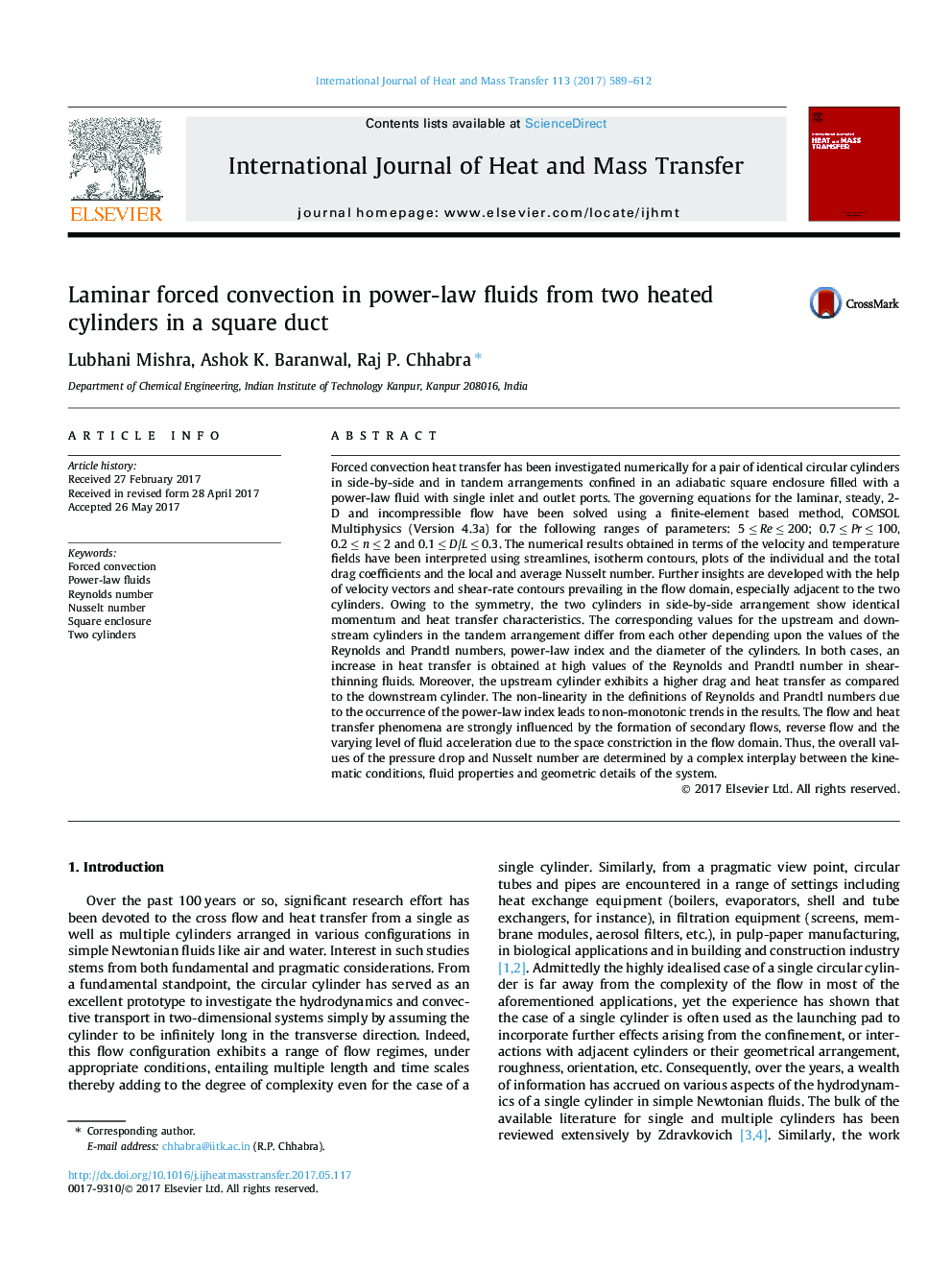| Article ID | Journal | Published Year | Pages | File Type |
|---|---|---|---|---|
| 4994200 | International Journal of Heat and Mass Transfer | 2017 | 24 Pages |
Abstract
Forced convection heat transfer has been investigated numerically for a pair of identical circular cylinders in side-by-side and in tandem arrangements confined in an adiabatic square enclosure filled with a power-law fluid with single inlet and outlet ports. The governing equations for the laminar, steady, 2-D and incompressible flow have been solved using a finite-element based method, COMSOL Multiphysics (Version 4.3a) for the following ranges of parameters: 5 â¤Â Re â¤Â 200; 0.7 â¤Â Pr â¤Â 100, 0.2 â¤Â n â¤Â 2 and 0.1 â¤Â D/L â¤Â 0.3. The numerical results obtained in terms of the velocity and temperature fields have been interpreted using streamlines, isotherm contours, plots of the individual and the total drag coefficients and the local and average Nusselt number. Further insights are developed with the help of velocity vectors and shear-rate contours prevailing in the flow domain, especially adjacent to the two cylinders. Owing to the symmetry, the two cylinders in side-by-side arrangement show identical momentum and heat transfer characteristics. The corresponding values for the upstream and downstream cylinders in the tandem arrangement differ from each other depending upon the values of the Reynolds and Prandtl numbers, power-law index and the diameter of the cylinders. In both cases, an increase in heat transfer is obtained at high values of the Reynolds and Prandtl number in shear-thinning fluids. Moreover, the upstream cylinder exhibits a higher drag and heat transfer as compared to the downstream cylinder. The non-linearity in the definitions of Reynolds and Prandtl numbers due to the occurrence of the power-law index leads to non-monotonic trends in the results. The flow and heat transfer phenomena are strongly influenced by the formation of secondary flows, reverse flow and the varying level of fluid acceleration due to the space constriction in the flow domain. Thus, the overall values of the pressure drop and Nusselt number are determined by a complex interplay between the kinematic conditions, fluid properties and geometric details of the system.
Keywords
Related Topics
Physical Sciences and Engineering
Chemical Engineering
Fluid Flow and Transfer Processes
Authors
Lubhani Mishra, Ashok K. Baranwal, Raj P. Chhabra,
